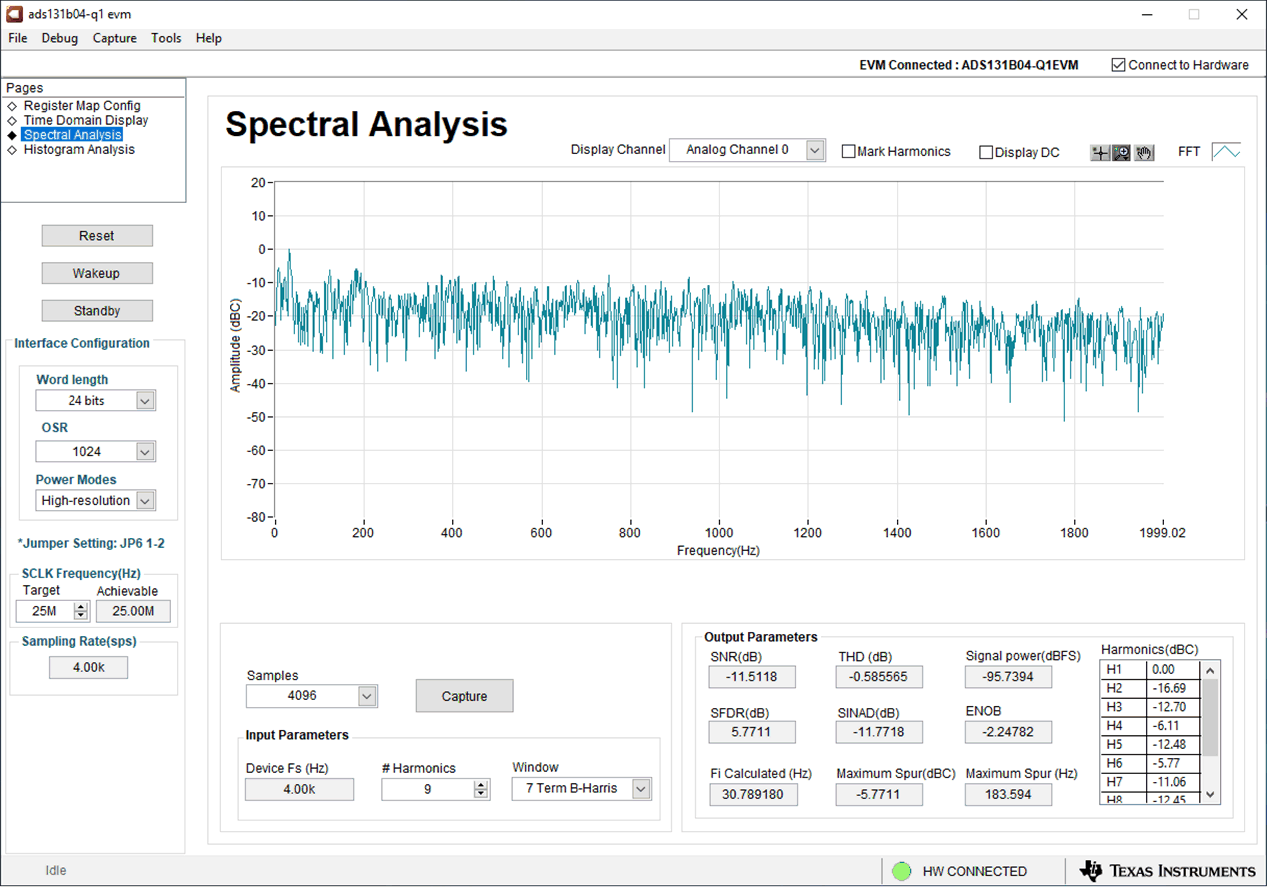SBAU352 June 2020
6.4 Spectral Analysis Tool
The spectral analysis tool, shown in Figure 15, is intended to evaluate the dynamic performance (SNR, THD, SFDR, SINAD, and ENOB) of the ADS131B04-Q1 ADC through single-tone sinusoidal signal FFT analysis using the 7-term Blackman-Harris window setting.
 Figure 15. Spectral Analysis Tool
Figure 15. Spectral Analysis Tool The FFT tool includes windowing options that are required to mitigate the effects of non-coherent sampling (this discussion is beyond the scope of this document). The 7-Term Blackman Harris window is the default option and has sufficient dynamic range to resolve the frequency components of up to a 24-bit ADC. The None option corresponds to not using a window (or using a rectangular window) and is not recommended.